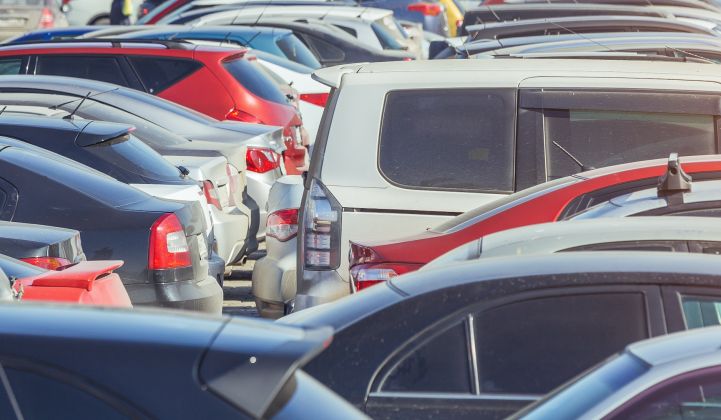The Trump Administration recently offered a new twist on an old claim about fuel efficiency standards.
For decades, opponents of Corporate Average Fuel Economy (CAFE) standards have argued that they would force Americans into smaller vehicles. But in justifying its latest proposal to freeze automobile fuel economy standards established in 2009 by the Obama administration, the Trump administration offered a novel argument: More fuel-efficient vehicles, the administration argued, would lower the cost of driving. This in turn would result in people driving more, resulting in increased vehicle injuries and fatalities.
The administration’s claim is half-right. More efficient energy technologies do create rebound effects, the phenomenon by which the energy savings associated with more efficient technologies are eroded because they also become cheaper. But by invoking rebound as justification for rolling back fuel efficiency standards, the Trump administration ironically makes the same mistake that many rebound skeptics (and defenders of CAFE standards) make about vehicle efficiency and rebound. They imagine that rebound will result in people simply using more of a technology or service in the same way that they always have, rather than changing products we consume or the ways in which we consume them.
Rebound effects occur because more efficient technologies functionally reduce the cost of energy services, so people consume more of them. In its simplest manifestation, an efficient technology reduces the cost of, say, lighting a room, so people light it more brightly, or leave the lights on all night. This direct rebound effect is the way that both the Trump administration and most efficiency advocates think about rebound and fuel efficiency.
Some call it the “Prius effect.” If a car gets more miles to the gallon, it is cheaper to drive, so people drive more. Skeptics of this claim argue that this effect is negligible. Most people aren’t looking for an excuse to drive their car more than they already do. So even if the cost of driving goes down, most people aren’t going to drive much more, if at all. On this point the skeptics are mostly right.
But for the most part, the “Prius effect” is not how rebound works when it comes to vehicles and fuel efficiency, at least in the United States. The greater effect is how engine efficiency has shaped consumer purchasing decisions. For personal vehicles, there’s good evidence that improved engine efficiency has gone toward a bigger and more powerful automobile fleet. One study found that between 1980 and 2006, 70 percent of the gains in engine efficiency were put toward increases in vehicle weight, horsepower, and torque rather than fuel savings. People aren’t driving much more due to efficiency (driving habits are much more sensitive to the price of gasoline than to fuel economy), but more efficient engines have rebounded to bigger cars and substantially eroded the emissions reductions that might have otherwise occurred.
Notably, during most of the period above, Congress had frozen CAFE standards for passenger cars and barely increased them for trucks. So the evidence suggests that fuel efficiency standards direct improved engine efficiency toward total vehicle fuel economy. In the absence of these sorts of regulations, engine efficiency has been directed to bigger vehicles.
There are important vehicle safety implications to consider here. Heavier vehicles are safer for their occupants, but they are more dangerous for the vehicles they collide with. Most research agrees that reducing the weight of vehicles on the road reduces the overall fatality rate associated with automobile accidents.
CAFE opponents also argue that higher purchase costs associated with more efficient vehicles (these due not to engine efficiency but lighter structural materials) lead some people to delay the purchase of a new vehicle and hence continue to drive older vehicles that haven’t been manufactured to current vehicle safety standards. There is some truth to this too. A small but significant minority of vehicle owners will delay purchase of a new vehicle.
On balance, it’s likely that CAFE standards don’t much affect the overall rate of vehicle injuries and fatalities one way or the other. The real cost of driving has been falling for decades, thanks to low fuel prices, more efficient vehicles, and growing affluence. Vehicle safety and fatalities per mile traveled have been falling as well, thanks to better technology, decades of safety regulation, and, notably, stricter drunk driving enforcement.
Rebound skeptics have often viewed rebound scholarship as hostile toward efforts to improve energy efficiency and dismissed concerns that rebound might erode the energy savings associated with efficiency measures. Skeptics argue that insofar as efficiency savings are taken in the form of greater consumption rather than energy savings, the effect is welfare-enhancing. But in the case of personal vehicles, rebound associated with improving engine efficiency has not been welfare-enhancing, resulting in a heavier automobile fleet that is both more dangerous and more polluting.
A proper understanding of the complicated ways in which energy efficiency rebounds manifest strengthens the case for fuel efficiency standards. In their rush to dismiss the evidence that rebound is real and significant, many energy efficiency advocates have unwittingly undermined the case for strengthening CAFE standards. Technological change very frequently proceeds in unanticipated ways, with consequences that surprise both advocates and opponents. Policy can help steer technology and consumption toward outcomes that are socially desirable. But to do so, scholars and policymakers will need to understand the full potential of rebound effects, and take them seriously.
***
Ted Nordhaus is executive director of The Breakthrough Institute; Alex Trembath is communications director for The Breakthrough Institute.




